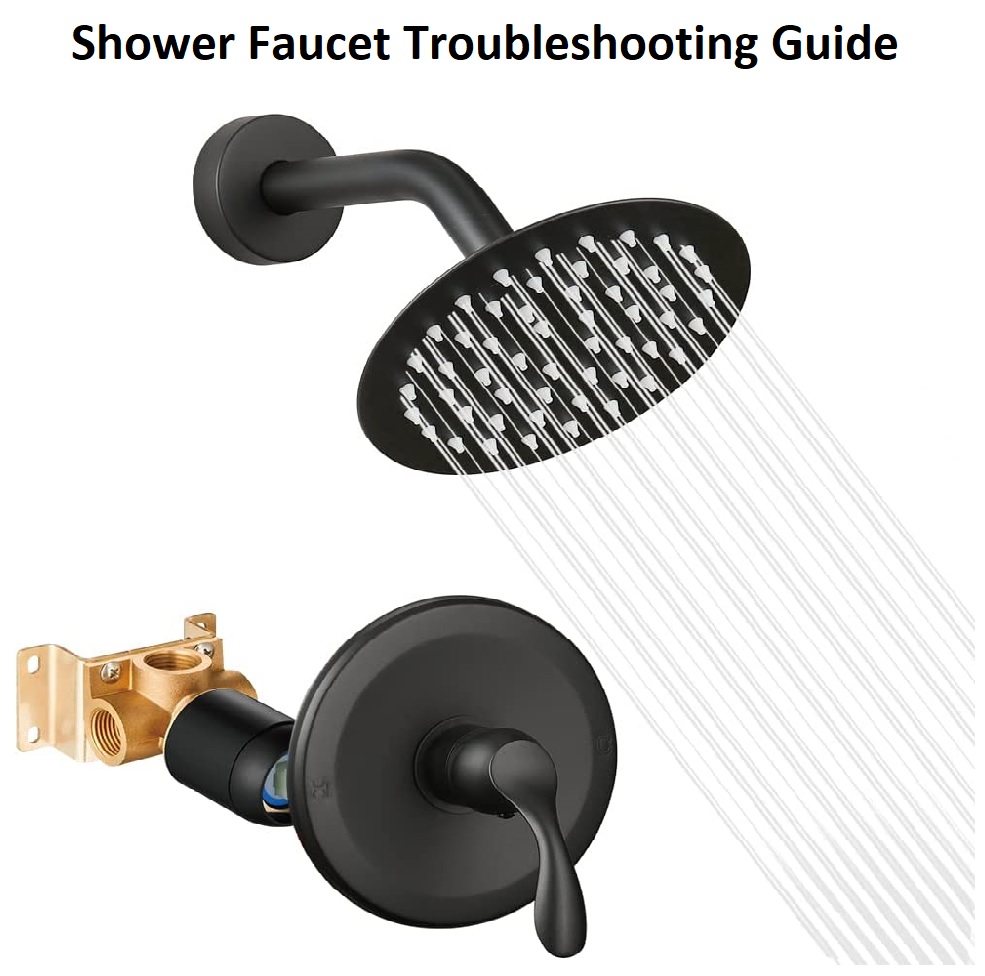A shower faucet is an essential part of any bathroom, and it controls the flow and temperature of water that comes out of the showerhead. Over time, shower faucets can malfunction and cause various issues, such as low water pressure, leaking, temperature fluctuations, and no hot water. In this blog post, we will provide a comprehensive shower faucet troubleshooting guide to help you identify and fix common issues with your shower faucet.
Contents
Types of Shower Faucets
Shower faucets come in several types, including single-handle, two-handle, and thermostatic. A single-handle shower faucet has one lever that controls both the flow and temperature of water. A two-handle faucet has separate knobs for hot and cold water, and the temperature is controlled by adjusting both knobs.
A thermostatic shower faucet has a thermostat that automatically maintains the desired water temperature. To troubleshoot your shower faucet, it is essential to identify which type of faucet you have.
Common Shower Faucet Problems
The most common shower faucet problems include low water pressure, leaking, temperature fluctuations, and no hot water. Low water pressure is usually caused by a clogged showerhead or a faulty valve. Leaking can occur from a loose or damaged washer, worn-out O-rings, or a faulty valve. Temperature fluctuations can be caused by a malfunctioning thermostatic valve, a loose handle, or a faulty cartridge. No hot water is usually caused by a broken or faulty valve, a malfunctioning thermostat, or a problem with the water heater.
Shower Faucet Troubleshooting Guide
To troubleshoot your shower faucet, follow these steps:
Identify the problem: Determine which issue your shower faucet is experiencing, such as low water pressure, leaking, temperature fluctuations, or no hot water.
Turn off the water supply: Turn off the water supply to the shower faucet to prevent any further damage.
Disassemble the shower faucet: Use a screwdriver to remove the handle and other components of the shower faucet.
Inspect the components: Inspect each component of the shower faucet, including the valve, cartridge, and O-rings, for any signs of damage or wear and tear.
Clean the components: If the components are dirty or clogged, clean them thoroughly using vinegar, a toothbrush, or a rag.
Replace the components: If any components are damaged or worn out, replace them with new ones. Make sure to use the correct parts for your specific shower faucet model.
Reassemble the shower faucet: Reinstall the components of the shower faucet in the correct order, and make sure everything is tight and secure.
Turn on the water supply: Turn on the water supply and test the shower faucet to see if the problem has been resolved.
Preventing Shower Faucet Problems
To prevent shower faucet problems from occurring in the future, follow these tips:
Clean and maintain the shower faucet regularly: Clean the shower faucet and showerhead regularly to prevent clogs and buildup. Replace any worn-out parts or components as needed.
Hire a professional for installation: If you are installing a new shower faucet or replacing an old one, hire a professional to ensure it is installed correctly.
Check the water pressure: Make sure the water pressure in your home is at the correct level to prevent strain on the shower faucet.
Use the shower faucet properly: Use the shower faucet as intended and avoid using excessive force or turning the handle too hard.
Conclusion
By following this comprehensive shower faucet troubleshooting guide, you can identify and fix common issues with your shower faucet.

